#Scottish witchcraft
Explore tagged Tumblr posts
Text
Scottish Divination Practices
by autumn sierra

The Frith
The Frith—translating to “to find”—is a divination charm practice used to gain insight into the future, specifically about missing people or predicting events. Traditionally performed on the first Monday of a quarter, the frithir (seer) would stand in a doorway at sunrise, cross their hands or fingers to represent the equal armed cross, and observe the landscape for omens found in birds, animals, or weather patterns.
The Ritual of the Frith
Traditionally performed on a solstice or equinox at a liminal time such as dusk or dawn. Frithers would often fast to heighten spiritual sensitivity, as well as use Saining water to bless themselves
Frithers would step past a threshold of the home or other significant place (crossroads, old well, etc) to stand with either foot on opposite sides, symbolizing standing between two worlds
Observed images, animals, environmental phenomena, etc were used to divine answers to questions or prophesy
Saining
Although the practice of saining is used to cleanse and bless primarily through the use of smoke, water, fire, etc, it can also be used as a method of divination. During the saining, the diviner would pay close attention to the movement of smoke and flames of burnt herbs—specifically Juniper, which is a traditional saining herb.
An Dà Shealladh (Second Sight)
An Dà Shealladh is a prophetic ability occurring through visions, and was often associated with Highland seers. Those with the ability were said to see spirits, wraiths, or omens of death and misfortune which would give them insight into future events. It was said to be hereditary, and some speculate that the ability may have unfortunately become dormant in the descendants of previous seers.
Hearth Divination
Once logs had been added to the fire of the home’s hearth and burned, diviners could read the behavior of the wood in response to the flames. Sparks and cracks had varying indications, as well as ashes which could be read similarly to how one reads tea leaves.
Mirror/Water Scrying
Water and mirror scrying are popular forms of divination in modern practice. Scrying with darkened, spiritually significant bodies of water (wells, lochs, lakes, bulláns, etc) was very effective for identifying shapes and visions within the water’s reflection (or lack thereof). In a similar way, darkened mirrors—or black mirrors—are use to mimic this effect. The keek-stane, most commonly known by its mention in Raymond Buckland’s Scottish Witchcraft & Magick, is something of a cousin to the black mirrors that are most popular today in that it uses a glass lens rather than a flat pane.
Creating a Keek-Stane
Find and obtain a glass lens, preferably one from an old clock or thermometer face, or one made specifically to be just that—a lens (frequently found in the scientific community)
Black out the lens using black paint on the convex side, careful to make the color as solid as possible without streaking or trapping dust. Be sure that the convex side is completely opaque with no light passing through
Place the lens convex-side down in a protective container of choice (Buckland specifies a box) with the proper materials to keep it in place and keep it from breaking
Oomancy
Egg divination, or oomancy, was a common form of folk divination often performed at Samhainn, Latha Bealltainn, or Hogmanay. It was mostly used to predict marriage, future events, or fortune. An egg would be cracked into a bowl of water, and then the diviner would interpret the shapes made by the egg whites.
Salt and Wax Divination
This method of divination is achieved by pouring salt or hot wax into water. The patterns and shapes created through this method would then be interpreted by the diviner. This method of divination was commonly used during Samhainn and Hogmanay.
Scapulomancy
Scapulomancy is a divination method in which seers would divine the future by interpreting the shoulder blades of animals (usually sheep). Cracks, dents, and other abnormalities in the bones would change the outcomes of the readings. Some would use fire to create the cracks necessary to read the bone, and others would read the natural bone as it was following its cleaning. Scapulomancy was used for predicting weather and harvests, guidance for battles, monitoring the well being of communities, and other fortune telling.
Stone and Fairy Mound Divination
Stones, Hagstones in particular, were believed to enhance An Dà Shealladh when peered through. Visiting fairy mounds at Samhainn and listening to the wind or the whispers of the fair folk and other spirits was another way to divine the future.
#celtic#folk witchcraft#witch community#witchblr#witchcraft#witch#witchcore#witches#green witch#witch aesthetic#scottish folk magic#scottish witchcraft#scottish highlands#scottish folklore#cunning folk#cunning woman#folk witch#witch blog#traditional witchcraft#witches of tumblr#folk practitioner#celtic folklore#folk magic#folklore#divination#Scottish divination#Celtic divination
219 notes
·
View notes
Text

Ostara
#scottish witchcraft#witchcraft#witch stuff#witchcore#witch craft#witchcraft spells#traditional witchcraft
2 notes
·
View notes
Text

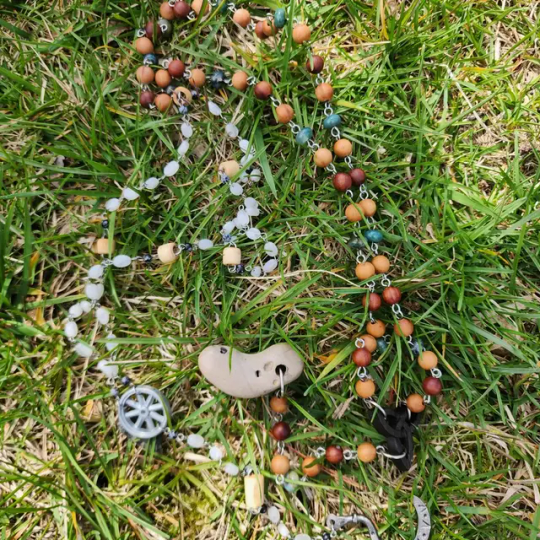
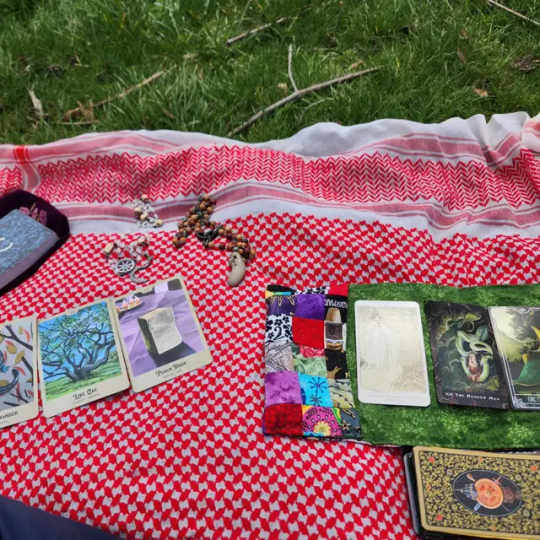
Spent the eclipse drawing cards and spending time with my deities. The new Winter Mother prayer beads from @lailoken go beautifully with the custom Celtic Faith beads I had commissioned from Lucien about a year and a half ago!
#folk magic#eclipse#solar eclipse#prayer beads#paganism#celtic paganism#scottish witchcraft#oracle cards#tarot deck
13 notes
·
View notes
Text
This scent is intoxicating

#Celtic#ancient celts#scottish folk magic#scottish witchcraft#cunning folk#folk practitioner#irish folk magic#irish witchcraft#witch blog#witchcore#traditional witchcraft#witch#witches#witchcraft#witch community#witchblr#witches of tumblr#folk witch#folk witchcraft#cunning woman
32K notes
·
View notes
Text

#stonework#masonry#goth#medieval#Celtic#grunge#whimsigoth#gothic#witchy#witch#witchcraft#Celtic witch#Irish#Scottish#folklore#dragon#folk#esoteric#symbolism#mystical#gothcore#old building#moody#museum#dark#paganism#witchblr#witch aesthetic#knightcore#pagan
596 notes
·
View notes
Text
the Craft of Isobel Gowdie: A Look at Scottish Folk Magic in the 1600s
by Keziah
Those of you readers familiar with Scottish Folk Magic and Traditional Scottish Cunning Ways, or perhaps with the history of witch trials in Scotland, will likely know the name Isobel Gowdie. For those of you who don’t, allow me the honor to introduce you. Known as ‘the Queen of Scottish Witches’ and ‘the Witch of Auldearn’, Isobel Gowdie was a woman whose confessions of witchcraft have gifted us perhaps greater insight into Scottish folkloric beliefs and the folk magic practices of her time than any other account accessible to us.
Little is known about the life and background of Gowdie, aside from the facts that she was the wife of a peasant farmer (John Gilbert), she resided in Lochloy in the Scottish region of Auldearn, and that she gave detailed testimony of her practice of witchcraft in 1662 (the first trial having taken place on the 13th of April). The confession was made in four parts over the course of six weeks. In this piece, we’ll take a look at some of the spells and practices that Gowdie revealed during her trial, diving into the magical craft of Isobel Gowdie.
On Becoming a Witch
In her first confession, Isobel details how she came into the practice of witchery by forging a covenant with the Devil. She states that she first encountered the Devil whilst walking ‘between the farmsteads of Drumdewin’. She then promises to meet the Devil again that night at the kirk, meaning church, in Auldearn. On this night, Isobel made a pact with the Devil, which she describes thusly –
‘The first thing I did was deny my baptism. Then I put one of my hands upon the crown of my head and the other to the sole of my foot and renounced all between my two hands to the Devil. He was in the reader’s desk’ – meaning at the pulpit – ‘with a Black Book in his hand.’
She then tells of another woman present, Margaret Brodie, who was already in covenant with the Devil and who served as a sort of assistant in this ceremony, mentor in Gowdie’s craft thereafter, and a high-ranking member of Gowdie’s coven. Throughout her confessions, Gowdie names other members of her coven along with practitioners from other covens and their locations.
‘Margaret Brodie from Auldearn held me up to the Devil to be baptized. He placed his mark upon my shoulder and sucked my blood from the mark. He spat the blood into his hand. Sprinkling it [the blood] on my head, he said, “I baptize thee, Janet, in my own name.” Her baptism concluded with her being given the baptismal name Janet.
The belief of inheriting the role of Witch through a pact with the Devil is one that appears often in Scottish, English, and Irish folk beliefs from this era, and also appears throughout the Appalachian and Southern United States and other regions of Europe. The act of touching one’s hand to one’s head and the other to one’s foot whilst ‘freely giving all between my hands’ to the Devil is not uncommon in these baptismal rites.
Gowdie states that her powers and the powers of her fellow coven members come directly from the Devil.
‘We get all our power from the Devil. When we ask him for it, we call him ‘Our Lord’.’
On the Devil
Gowdie gives detailed descriptions of her interactions with the Devil and of his appearance. She depicts herself as a servant of the Devil and lists many magical acts she carried out in the Devil’s name. She described him as being cold to the touch and ‘a meikle, blak, roch man’ – being large and hairy with coal-black skin – who ‘had boots and sometimes shoes on his feet – but his feet were always forked and cloven.’
She also explains that the Devil would sometimes appear to her and the others who served him as an animal, and she states that the Devil would come to her house sometimes in the form of a crow or deer ‘or in any other shape, now and then.’ Gowdie goes on to state that the Devil was present at the Sabbats held by Gowdie and her company. She recounts one Candlemas –
‘The Devil sat at the head of the table, and all the coven about.’
In her testimony, particularly during her third confession, Gowdie speaks of having sexual relations with the Devil, as does a fellow coven member, Janet Breadhead, in her own confessions. Isobel gives further detail into the Devil’s anatomy and the instances when she partook in intercourse with the Devil, as well as describing orgies with her coven –
‘He would lie with us in preference of all the multitude; neither had we nor he any kind of shame, but especially he has no shame with him at all.’
On Spirit Companions
Isobel reveals during her second confession, ‘There are thirteen people in my coven, and each one of us has a spirit to wait upon us, when we please to call on him.’ As an aside, many believe that the standard of having 13 members to a coven comes from Isobel Gowdie’s confessions.
During this confession, she describes some of the spirits (though some of the descriptions were omitted from written record) –
Swein: always dressed in grass-green
Rorie: always clothed in yellow
the Roaring Lion: always dressed in sea-green
Mac Hector: a young-looking devil, dressed always in grass-green
Robert the Rule: always dressed in faded dun. He seems to be in command of the rest of the spirits.
Thief of Hell Wait Upon Herself: of whom she gives no description
the Red Reiver: He’s my personal spirit. He waits upon me and is always dressed in black.
Robert the Jacks: always clothed in dun and seems old. He’s a glaikit, goukit (simple-looking, stupid/dumb) spirit!
Laing: of whom she gives no description
Thomas, a Faerie: of whom the description is not included in the written testimony
On Sympathetic Magic
Isobel Gowdie describes an act of sympathetic magic – that is, when one uses an image or item to represent someone and then performs actions (be they symbolic or literal) toward this item or image, actions which will then affect the intended person – that she performed with members of her coven.
She tells that they made a clay effigy or clay doll, with which they intended to ‘kill the Laird (Lord) o’ Park’s male children’. She states,
‘All the Laird’s male children will suffer by it if it isn’t found and broken, as well as those who’ve been born and died already.’
‘John Taylor brought the clay home in his plaid and his wife broke it up into small bits, like meal. She sifted it through a sieve and poured water into it, in the Devil’s name, and kneaded it until it was like rye dough.’
The dough was then shaped and made to resemble the Laird’s sons.
‘It wanted none of a child’s features, and its hands were folded down by its sides. Its texture was like crab or a scraped and scalded piglet.’
In her third confession, Isobel reveals the words that were recited whilst the clay doll was made –
‘The words which we spoke, when we made the doll, for destroying the Laird o’ Park’s male children were thus: ‘In the Devil’s name, we pour this water in among this meal, For lang dying and ill health; We put it into the fire, That it may be burnt both stik and stowre* It shall be burnt, with our will, As any stubble upon a kill.’
*Stik: a stick-like implement or object / (in this context) to be burnt to the point of being destroyed; I’m not sure how stowre should be interpreted from Pitcairn’s work and have had difficulty finding a meaning for this.
‘The Devil taught us the words; and when we learned them, we all fell down upon our knees with our hair about our eyes and our hands lifted up, looking steadfast upon the Devil and still saying the words thrice over, ‘til it [the doll] was made. And then, in the Devil’s name, we put it in the midst of the fire. After it had shriveled a little before the fire, and when it was red-hot like a coal, we took it out in the Devil’s name. ‘Til it be broken, it will be the death of all the male children the the Laird o’ Park will ever get.
‘Cast it over a kirk (church), it will not break until it be broken with an axe, or from such a thing, be a man’s hands. If it is not broken, it will last a hundred years.’
Isobel goes on to describe what actions they performed upon the clay figure, such as putting it in hot embers, holding its face near the fire until it shriveled, and roasting it or parts of it ‘every other day’.
She concludes by informing those at her trial that the doll was still being practiced upon and roasted when she was taken in, and that they can find the doll hanging upon a peg in John Taylor’s house, with ‘a clay cradle around it’.
Her account is corroborated by the testimony of Janet Breadhead. After describing the doll, she shares,
‘It was put near the flames until it was dry and wrinkled. Then we placed it on the hot coals until it was hard. Then we took it from the fire and wrapped it in a cloth and hid it away on a shelf or sometimes under a chest. Every day, we would wet it then roast it and bake it, and every other day we would turn it at the fire, until the bairn was dead. Then we hid it [the doll] away and didn’t touch it until the next bairn was born.’
She states that they would do the same with the doll within six months of the child’s birth, continuing their practice of roasting the doll ‘until the new bairn died too.’
In a later confession, Isobel reveals their purpose in doing this was to make the Laird o’ Parks heirless.
On Taking the Form of an Animal
Isobel Gowdie mentions taking on the shape of various animals, an act she performed along with members of her coven. Though she mentions multiple types of animals she can take the shape of, the animal she is most famously remembered for presenting herself as is the hare, the form which the Devil had her take when he sent her on an errand, as relayed in her third confession. To this day, artworks in honor of Gowdie still feature the hare.
She describes an instance when she took on the form of a jackdaw to gain access to the dye-house of a neighbor in Auldearn, while two other women with her had taken the shapes of a hare and a cat.
During her second confession, Isobel describes how she would take on the shape of a hare –
‘When we go into hare-shape, we say: "I shall go into a hare, With sorrow and sych (sigh) and meikel (great, much) care; And I shall go in the Devil’s name, Aye while I come hame (home) again." And instantly we start into a hare.’
To change back, she would say:
‘Hare, hare, God send thee care. I am in a hare’s likeness now, But I shall be a woman even now. Hare, hare, God send thee care.’
To turn into a cat, she recited this three times:
‘I shall turn into a cat, With sorrow and sych and a black shot; And I shall go in the Devil’s name, Aye while I come hame again.’
To turn back from a cat:
‘Cat, cat, God send thee black shot. I am in a cat’s likeness now, But I shall be in a woman’s likeness even now. Cat, cat, God send thee black shot.’
To turn into a crow, ‘we say three times:
I shall turn into a crow, With sorrow and sych and a black throw; And I shall go in the Devil’s name, Aye while I come hame again.’
And to turn back from a crow:
‘Crow, crow, God send thee black throw. I am in a crow’s likeness now, But I shall be in a woman’s likeness even now. Crow, crow, God send thee black throw.’
Isobel also explains that when she or her fellow witches are in their animal forms, they can cause whomever they like to join them in that form by saying, ‘I conjure thee, Go with me!’ whilst with them or in their house. ‘And they instantly turn into what we are, either cats, hare, crows…, and go with us wherever we want.’
On Raising the Wind
Isobel explains how she and her coven members would raise and control the wind by wetting a cloth rag in water. They then took a laundry stick and ‘knocked the rag upon the stane (stone), saying three times:
I knock this rag upon the stane, To raise the wind in the Devil’s name – It shall not lie until I please again!’
When they wanted to calm or lay the wind again, they would dry the rag and say three times:
We lay the wind in the Devil’s name It shall not rise ‘til we like to raise it again!’
On Fevers
To rid one of a fever, Gowdie revealed that she would say three times:
‘I forbid the quaking fevers, the sea-fevers, the land-fevers, and all the fevers that ever God ordained; out of the head, out of the heart, out of the back, out of the sides, out of the kidneys, out of the thighs, from the points of the fingers to the nibs of the toes – out shall all fevers go. In Saint Peter’s name, Saint Paul’s name, and all the saints of Heaven. In the name of the Father, the Son, and the Holy Ghost!’
On Magical Travel
Accounts of magical travel across great distances or into the realms of the sidhe-folk are not uncommon amongst folk and traditional practices throughout the United Kingdom and Ireland. Gowdie gives a few such accounts. In the first, she describes how her coven met and yoked a puddock-plough (a plough drawn by frogs).
‘The Devil held the plough and John Young from Mebelstown, our Officer, drew it. Puddocks drew the plough, like oxen. The traces were made of dog grass. Its coulter was made from a half-gelded ram’s horn and a bit of horn was used as its blade. We went around two or three times with all of us in the coven going all the while up and down with the plough, praying to the Devil for the fruit of that land, and that thistles and briars might grow there.’
In another account of magical travel, Gowdie details how her coven would place a blade of grass, straw, or a cairn stalk on the ground between their feet and stand over it, saying, “Horse and Hattock, in the Devil’s Name!” or “Horse and hattock, horse and go; horse and pellatis, ho! Ho!” This would transform the grass or straw into a horse that they could then ride. The horses would also be able to fly –
‘...and we would fly away wherever we would, like straw flying about on the highway.’
She also proclaims that if they were to pass anyone and be seen during such a flight, that unless the person was quick in blessing themselves, the coven would ‘shoot them dead if we want. Anyone shot by us, their soul goes to Heaven but their body stays with us – they will fly to us like horses as small as straws.’
These accounts are but a portion of what Isobel Gowdie spoke on in her confessions. While I would love to dig into everything she revealed, that’s simply far too much for a blog post. I highly recommend, though, that you do look into the records of her confessions if this piece interested you. You’ll find explanations as to how she and the women of her coven used charmed broom sticks in their beds to keep their husbands from noticing their absence in the night; the making of Elf-shots or Elf-arrows, and how Isobel and others were instructed in how to use said tools against others; explanations as to how one can take the strength from someone’s ale and put it in the drink of another, and how one can steal the yield from another’s farm; along with the ‘salacious’ accounts of Isobel’s intimate encounters with the Devil, and so very much more.
Sources & Further Information:
‘Ancient Criminal Trials in Scotland, Vol. 3, Pt. 2’ - Pitcairn, Robert, Esq.
'The Black Book of Isobel Gowdie and Other Scottish Spells and Charms' - Mills, Ash William
'Narratives of Sorcery and Magic - Volume 2' -Wright, Thomas
‘The Visions of Isobel Gowdie: Magic, Witchcraft and Dark Shamanism in Seventeenth-Century Scotland’ - Wilby, Emma
‘1Scot1Not’ podcast episode ‘Isobel Gowdie: the NAUGHTIEST Girl of the Entire 17th Century’
#isobel gowdie#scottish history#witchcraft history#scottish folk magic#scottish folklore#folk magic#sheydmade#scottish witch trials#witch trials
130 notes
·
View notes
Text

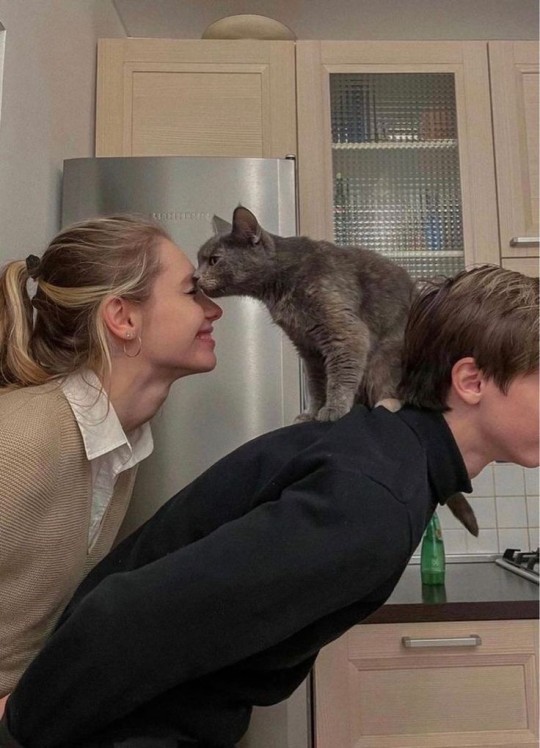
WIP✍️ Reference
#Beatrice Vargas#Sebastian Sallow#sebastian sallow x oc#sebastian sallow x mc#sebastian#hogwarts legacy sebastian#sebastian sallow x reader#sallow family#sallow#19th century#victorian#victorian era#hogwarts#hogwarts legacy#hogwarts school of witchcraft and wizardry#hl#slytherin#oc x canon#half russian#scottish#digital art#my art#reference#digital#hphl#hphl mc#cat
35 notes
·
View notes
Text
To the Otherworld, then.
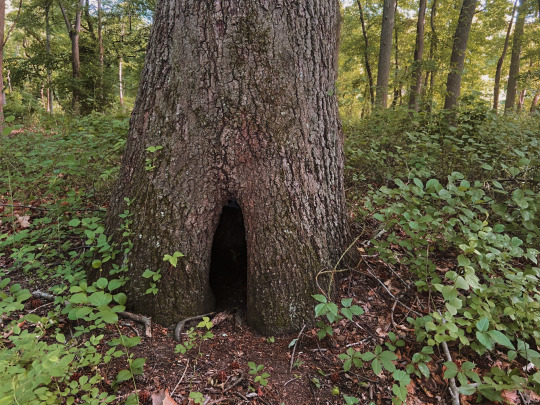
#celtic#folk witchcraft#witch community#witchblr#witchcraft#witches#green witch#witch#witch aesthetic#witchcore#folk witch#irish witchcraft#witch blog#traditional witchcraft#witches of tumblr#cunning woman#cunning folk#scottish folk magic#Scottish witchcraft#celtic folklore#ancient celts#Otherworld
384 notes
·
View notes
Text

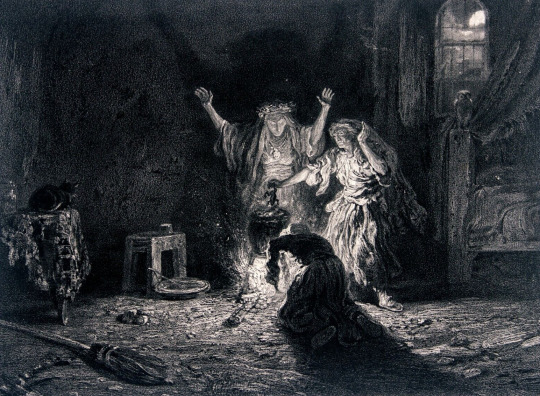
Charles-Nicolas Cochin (1715-1790) - Les Sorcières de Macbeth (The Witches of Macbeth)
#charles nicolas cochin#les sorcières de macbeth#the witches of macbeth#william shakespere#macbeth#“the scottish play”#witch#witches#witchcraft#18th century art#art#illustration#engraving
177 notes
·
View notes
Text

As a member of the witchcraft community this make me emotional because so many innocent people especially woman who were wrongly accused and convicted of witchcraft and who sadly lost their lives they have been pardoned although a little to late but I’m proud that we as a community have a tartan as manorial for those who lost their lives for being wrongly accused and executed of witchcraft
22 notes
·
View notes
Text
A brief thought as you go about your day:
As witchcraft/folk practitioners, do not give out detailed personal information to just anyone.
I’ve seen so many bios and posts on Tumblr alone containing peoples’ real names, ages, birthdates, full astrology charts, personality types, sexualities, images of themselves either in their profile picture or in a pinned introductory, and a couple times I even saw blood types. And with trauma dumping flooding social media, others get a clear view your mental and emotional wellbeing as well.
This opens you up to potential magickal/spiritual warfare. You’d like to think that others in this community are just as kindhearted as you are. But like in real life, you never truly know someone’s intentions. And since this business is all about intentions, make one of yours to keep yourself safeguarded.
Cleanse your space and yourself
Ward your home
Refresh protections
Physically lock your home’s entrances and exits as necessary
Do not share in-depth information online with random strangers
BE. MINDFUL.
Stay safe!!
#celtic#folk witchcraft#witch community#witchblr#witchcraft#witches#green witch#witch#witch aesthetic#witchcore#folk witch#witch blog#traditional witchcraft#irish witchcraft#irish folk magic#scottish folk magic#Scottish witchcraft#ancient celts#celtic folklore#witches of tumblr#magick#folk magic#safety
75 notes
·
View notes
Text

Why are my friends so fucking FUNNY
#supernatural#my friends are so funny#rowena macleod#ruth connell#scottish#witchcraft#funny#text#crowley#dean winchester#sam winchester#spn
30 notes
·
View notes
Text
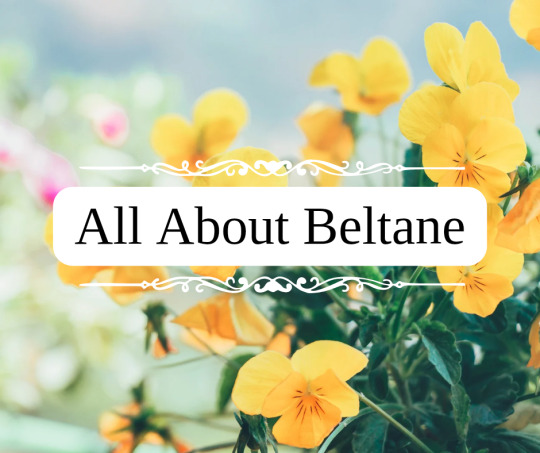
All About Beltane
Beltane, also known as Bealtaine in Irish, is a Gaelic holiday traditionally held on May 1st or the halfway point between the spring equinox and the summer solstice. It is believed to be named after the Celtic sun god Belenus. It was widely observed in Ireland, Scotland, and the Isle Of Man, and is one of the 4 major Celtic fire festivals. It is mentioned in even the earliest Irish literature and marked the beginning of summer and used as the marker to drive cattle into their summer pastures. Although public celebrations have mostly fallen out after the 20th century and many traditions have been mixed with other cultural holidays (such as the Roman holiday May Day), many Celtic Neopagans and Wiccans still celebrate, and many local traditions still continue, causing it to now get a cultural revival.
Traditionally, rituals were held to protect the livestock that moved pastures, along with crops, dairy products, and people, and to encourage growth. It was also important to appease the Aos Sí, or nature spirits/fairies, which were believed to be more active then.
According to early medieval texts in 908, druids would make two bonfires and drive cattle between them to protect them from disease. In the 18th and 19th centuries, bonfires continued to be an important part of the celebrations. Before the bonfires were lit, all hearth fires were put out, and then relit using the fire from the Beltane bonfires after the celebration.
Continuing into the 19th century, cattle were still driven over or between flames, or sometimes around the fires or made to leap over. The people themselves did as well for good luck and protection. Once the fires died down, people would dab themselves with the ashes and sprinkle them over their crops and livestock. Torches from the bonfires would also be brought home and carried around the home or boundaries, and also used to relight the hearth.
Food was also an important part of the Beltane festival, and usually included a feast of lamb, which, historically, was sacrificed. In 1769, it was written that a hot drink, called a caudle, made of eggs, butter, oatmeal, and milk was served, along with tossing a bit on the ground as an offering. A Beltane Bannock, a type of oatmeal cake, was also written to be important and had a few traditions around it.
In one tradition, the Beltane Bannock had nine knobs on it and each person would take the bannock and face the fire, proceeding to break off the knobs of bannock one at a time and tossing them behind their shoulder as an offering to the spirits for protection over their livestock and from predators (one for the cow, one for the sheep, one for the fox, etc). Afterwards, they would drink the caudle.
According to other 18th century writers, there was another Beltane Bannock tradition where the bannock would be cut into slices and one was marked with charcoal. The slices were then thrown into a bonnet and everyone would take one out while blindfolded. According to one writer, whoever pulled the marked bannock slice had to leap through the fire 3 times. According to another, the person would instead be pretend-thrown into the fire and for some time afterward people would talk about the person as if they were dead. This may have always been symbolic, or it may have been a tradition from a time where actual human sacrifice was used. This tradition was also near identical to May Day traditions that occurred in Wales and other parts of Europe, however.
Other traditions including flowers and plants were also observed, especially ones that evoked fire. Documents from the 19th century cite that yellow and white flowers, such as primrose, rowan, hawthorn, gorse, hazel, and marsh marigold was used and placed at doorways and windows. Sometimes they were strewn into garland, and other times they were made into bouquets, made into crosses, or fastened to them. They were also fastened to cows and milking/butter equipment.
Decorating a May Bush or May Bough was also a widespread tradition, and it usually consisted of a small tree or branch (typically hawthorn, rowan, holly, or sycamore) decorated with bright flowers, ribbons, candles, painted shells or egg shells from Easter, and more. In some traditions they also decorated it with gold and silver May Balls, which were hurling balls, that were then either given out to children or gifted to winners of a hurling match. It was also known as the only acceptable time to cut a thorn tree, as they were associated with fairies and may have also been a relic of worshipping tree spirits. It would either be decorated where it grew, or branches hung over windows, doors, roofs, and barns either inside or outside. Traditionally, it was the responsibility of the eldest of the house to decorate it.
The tree was usually left up until May 31st, but in some traditions it would be burned in the festival bonfire after singing and dancing around it. In Dublin and Belfast, May Bushes were brought into town and decorated by the whole neighborhood, with each neighborhood competing for the most beautiful bush. These competitions could also lead to neighborhoods attempting to steal others May Bushes, which eventually led to the May Bush being outlawed in Victorian times.
Appeasing the fairies was also a big part in Beltane celebrations, with many traditions revolving around offerings to the fairies and also warding them off, as there were many fears around them stealing dairy. One protection tradition was to leave 3 black coals under the butter churn. Another was to hang May Boughs on the milk pails. And yet another was to hang cattle tails in the barns. Flowers were also used to decorate the cattle's horns for good luck.
Farmers would also lead a procession around the boundaries of the farm and would "carry with them seeds of grain, implements of husbandry, the first well water, and the herb vervain (or rowan)", stopping at the four cardinal points of direction starting at the east, and performing rituals towards each direction at each stop. These processions were said to bring protection of their farm produce and encourage fertility. Some people also made the sign of the cross using milk on the backside of cattle for good luck.
As for fairy offerings, one tradition was to pour milk or leave food at places associated with the fairies such as "fairy trees". In Ireland, cattle were brought to "fairy forts" where a small amount of their blood was poured into the earth with prayers of the herd's safety. Sometimes, the blood would be left to dry and then be burnt.
Visiting holy wells was also a popular way to celebrate Beltane. Visitors would walk sunwise, moving from east to west, around the well while praying for health. They would then leave offerings of coins or cloth. The first water drawn from the well on Beltane was thought to be especially potent, and would bring good luck to the person who drew it.
Morning dew on Beltane was also thought to bring goodluck and health, and maidens would wash their face with it or roll in it at dawn or before sunrise on Beltane. It was also collected in a jar, left in sunlight, and then filtered. The dew was said to increase sexual attractiveness, maintain youthfulness, protect from sun damage, and ensure skin health during the ensuing year.
Modern day celebrations may vary from these more traditional festival activities, but many choose to incorporate or take inspiration from the traditions at least. Popular traditions still revolve around bonfires, feasts, decorating a May Bush, and focusing on protection and growth.
Beltane Associations
Colors - yellow, white, red, green
Food - lamb, milk and dairy, beef, bannocks, caudle, cakes
Animals - cattle, sheep, other herd animals
Items - primrose, rowan, hawthorn, gorse, hazel, marsh marigold, holly, sycamore, yellow and white flowers, flower garland, greenery, morning dew, dairy products
Crystals - citrine, fire agate, fire opal, carnelian, red and yellow jasper
Other - protection, fertility, good luck, fire, smoke, ash, sun, bonfires, farming
Ways To Celebrate
light a bonfire
jump over or dance around a bonfire
decorate a May Bush or May Bough
craft and hang flower garland
bake Beltane Bannocks
collect morning dew
create some caudle
ward and protect your home or property
leave offerings for the fairies
focus on protection, growth, and luck magic
enjoy time in the sun
have a feast
create a bouquet out of yellow and white flowers
visit a farm or petting zoo
#beltane#beltaine#bealtaine#celtic#gaelic#irish#scottish#pagan#witch#witchy#wicca#may day#magick#magic#magickal#grimoire#tradition#celebrate#bonfire#fire festival#witchcraft#spiritual#witchblr#witch community#paganism#pagan witch#celtic paganism#paganblr#about#dairy
136 notes
·
View notes
Text
Fáilte! (Welcome to the Temple of Brigid!)
My name’s Silver and I’ll be sharing my insights and rituals centered around the lovely goddess Brigid here. Brigid is traditionally honored in Ireland, Scotland, and parts of Wales. Over time, her many names spread and now she’s beloved and worshipped worldwide, both as a pagan goddess and a Saint. She is mostly known as the goddess of healing, creativity, fire, and poetry. However, she also has associations with the season of spring, domestic animals, wells and a whole list of other things.
I believe her energy offers guidance, inspiration, and healing to all who call upon her.

The Temple of Brigid blog is meant to be a place of warmth, invitation and learning about Brigid—(likely to also become a bit of a personal echo chamber at times as well lol)
I look forward to sharing this part of my own journey with you, and I hope you find something here that resonates, inspires, or helps you along your path. Thank you for visiting my page and I invite you to come back often to explore more ways to connect with the goddess Brigid.
#brigid#goddess#paganism#paganblr#witch blog#witch community#pagan witch#witchcraft#pagan#pagans of tumblr#pagan community#st brigid#witchblr#witches of tumblr#irish mythology#irish gods#tuatha de danann#scottish mythology#imbolc#imbolg
21 notes
·
View notes
Text

looks like that kid knows about paranormal activity :0
#art#my art#ttte duck#duck the great western engine#ttte donald#donald the scottish twin#donald x duck#thomas the tank engine#thomas and friends human au#sodor uk#ttte#my comic#horror comic#halloween#witches#witchcraft#the devil#satan
37 notes
·
View notes
Text

By Rowan Berry and Red Thread,
I put all Evil to its speed...
143 notes
·
View notes